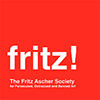

Art and Conscience in a Time of Upheaval.
Ben Shahn (1898-1969)
Presentation by Ori Z Soltes, Washington (DC)
March 12, 2025 @ 12:00 pm - 1:00 pm
| FreeGeorgetown University professor Ori Z Soltes will speak about Ben Shahn (1898-1969), who arrived in 1906 as a child to the United States from Tsarist-governed Lithuania. Four years after the Tsarist authorities had exiled his father to Siberia for alleged revolutionary activities, his mother managed to bring the family to New York. There they reconnected with Ben’s father who had escaped from Siberia and made it to the US by way of South Africa.
Image above: Ben Shahn, Detail of the Mural “The Meaning of Social Security,” Wilbur J. Cohen Federal Building, Washington, D.C.
Within 25 years Shahn emerged as perhaps the key figure in the developing arena of American Social Realist painting with a strongly political bent. He became renowned for his championing of left-wing causes and in his later years achieved recognition as a photographer, as well. No artist in the twentieth century more effectively than Ben Shahn simultaneously appreciated his adopted country for its promising possibilities and criticized it stridently for its failures to live up to that promise. His work remains painfully relevant today.

Ben Shahn, Children of destitute Ozark mountaineer, Arkansas, 1935

Ben Shahn, Sharecropper on Sunday, Little Rock, Ark., 1935.

Ben Shahn, Mural at the Wilbur J. Cohen Federal Building, Washington, DC, 1939-1940

Ben Shahn, Mural at the Wilbur J. Cohen Federal Building, Washington, DC, 1939-1940
Ori Z Soltes teaches art history, theology, philosophy, and political history in Georgetown University’s Center for Jewish Civilization. He is the author or editor of 31 books, including Jewish American Painters in the Twentieth Century and Welcoming the Stranger: Abrahamic Hospitality and Its Contemporary Implications (with Rachel Stern).

Ben Shahn, Lidice poster, DPLA, between 1941 and 1945.



